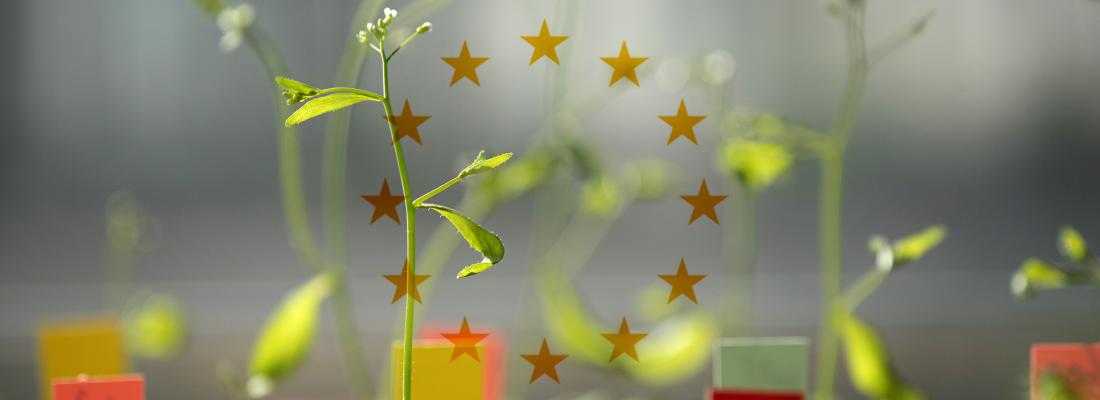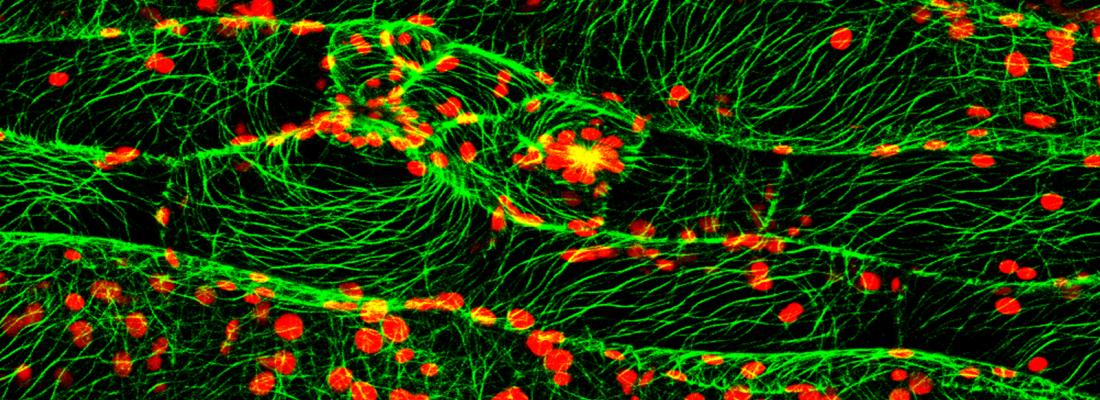Reading time 2 min
Two ERC Starting Grants for INRAE researchers in ecology and evolution, and in cellular biology
Published on 10 January 2022


The ERC programme is dedicated to exploratory research with a criteria of scientific excellence. There are five funding schemes, including Starting Grants that are awarded to young researchers with a very ambitious scientific project and who have demonstrated research-leader abilities.
Claudia Bartoli, HoloE2Plant
“Exploring the Holobiont concept through a Plant Experimental Evolution study”
This scholarship rewards Claudia’s long investment, which started during her post-doctoral fellowship with Fabrice Roux at the Laboratory of Plant-Microbe Interactions in Toulouse, and kept going when she joined the Institute for Genetics, Environment and Plant Protection research unit. There, she set up a research laboratory of excellence to develop high-throughput microbiology (culturomics). It is necessary to quickly isolate and characterize microorganisms adapted to plants and therefore study the co-evolutionary mechanisms between the microbiota and its host.
Claudia Bartoli is a young researcher who recently joined the Institute for Genetics, Environment and Plant Protection (IGEPP) at INRAE’s Brittany-Normandy research centre. She studies the plant microbiota and their interactions.
The HoloE2Plant project aims to explore the Holobiont concept. Put simply, the idea is to prove the influence of the microbiota on our evolution thanks to an innovative co-evolutionary experimental approach. The idea was born during the 2020 lockdown due to the pandemic, while talking with Léa Frachon, a researcher at the University of Zurich. Using a fast cycling plant model (40 days) would then make it possible: study the co-evolutionary mechanisms by producing sterile plants which is something that could not be done with animals.
Humans, animals and plants are all holobionts. This concept is now underpinning more and more scientific projects, which range from the study of environmental, animal or plant ecosystems to that of immunity, nutrition and human health.
There are 3 steps to the project:
- assembling synthetic communities (SynComs) representing the plant's functional microbiota to test their impact on resistance to Rhizoctonia solani, a fungal pathogen of Brassicaceae;
- monitor the plant, the SynComs and the pathogen over 9 plant generations and identify modifications at the genetic level of the plant-microbiota-pathogen triptic;
- identify the genetic bases of these interactions to validate the Holobiont concept and develop new mathematical and quantitative genetics methods to compare genetic changes between generations during evolution.
Kalina HAAS, STORMtheWALL
“Resolving the mechanism of plant cell expansion at high spatio-temporal resolution”
Despite plants being at the heart of our civilization, how they grow remains largely a mystery. Plant cells are pressurized and enclosed by dense polysaccharide networks, the cell walls, which are an important source of our food, renewable materials and energy. In growing cells, the walls are faced with the challenge to expand without succumbing to the extreme forces exerted on them by the pressure of the cells. So, what are the changes in the structure and chemistry of the cell walls that drive growth and how are these changes coordinated? This question has remained unresolved in part due to the lack of appropriate tools to manipulate and visualize these changes with a high enough spatial and temporal resolution.
But this was without counting on a new discovery recently made by Kalina, who developed new super-resolution imaging techniques to reveal that cell wall polymer expansion can drive growth.

What next? The goal of STORMtheWALL is to unravel the molecular mechanisms that underly cell expansion. Kalina will be using super-resolution imaging to follow the nanoscale changes of the cell wall during growth. Photo-stimulation multiplexed with intracellular biosensors will also be used to control and monitor the rapid succession of biochemical events that constitute the growth motor. This project is also expected to provide new tools and insights to improve the conversion of biomass into chemical building blocks, fibers and energy and to provide inspiration for the conception of new nanomaterials
Kalina Haas received her master’s degree in physics at the University of Warsaw in 2010. She then moved to study the molecular organization of synapses using super-resolution microscopy and she completed her PhD in neurobiology at the University of Bordeaux (2) in 2013. Subsequently, she did her post-doctoral training at Hutchison Cancer Unit at Cambridge University where she worked on DNA damage repair and developed strategies for multiplexed biosensing. After a short post-doctoral position at the University of Paris Diderot, she joined INRAE as a tenure track researcher in 2019 where she currently works as a research scientist.
